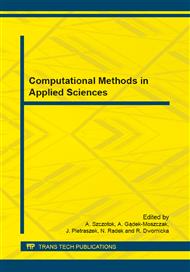p.3
p.11
p.17
p.23
p.29
p.37
p.43
p.49
Simulation-Based Engineering Science Challenges of the 21st Century
Abstract:
Since “Seldom have so many independent studies been in such agreement: simulation is a key element for achieving progress in engineering and science” [National Science Foundation (NSF) Blue Ribbon Panel Report on Simulation-Based Engineering Science: Revolutionizing Engineering Science through Simulation (NSF Press, May 2006)], we attempt to outline briefly new 21st century computational challenges and their potential impact on our future. We present not only the progress in computational science and engineering and/or cyberinfrastructure, but also the necessary steps to overcome the existing educational, cultural and organizational obstacles as well. The authors identify themselves with presented ideas, which have already been expressed in the past (e.g. in different position papers and reports on research directions formulated during discussion panels and workshops organized, among others, by WTEC [Information on http://wtec.org/reports.htm]).
Info:
Periodical:
Pages:
3-8
Citation:
Online since:
January 2015
Authors:
Price:
Сopyright:
© 2015 Trans Tech Publications Ltd. All Rights Reserved
Share:
Citation:


